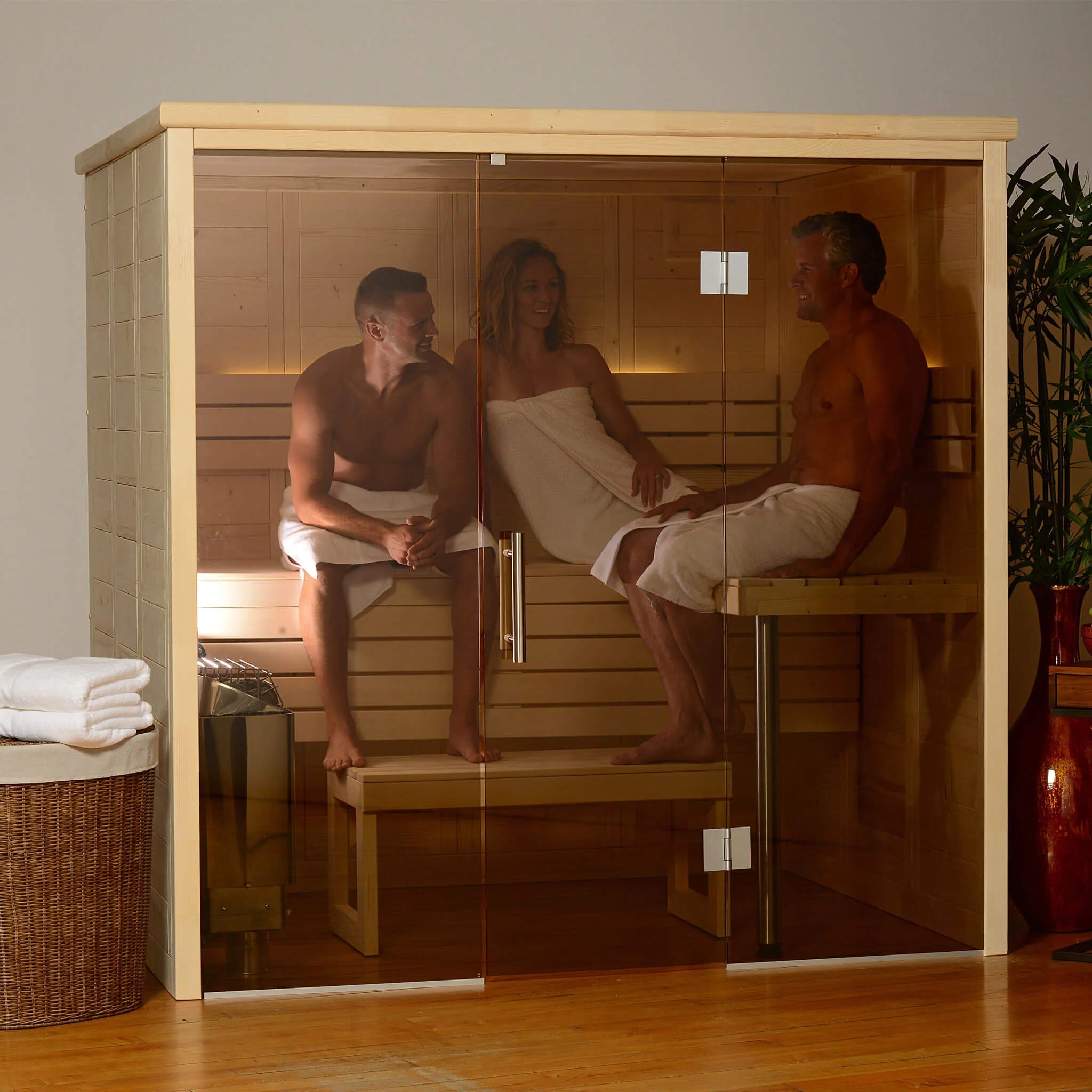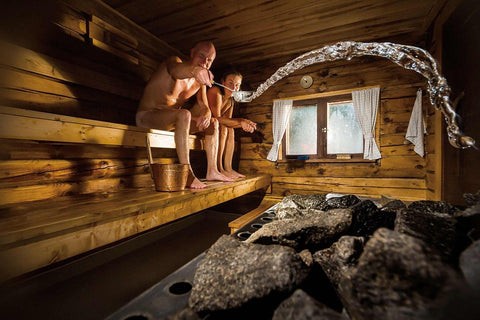Facts About Traditional Sauna Revealed
Facts About Traditional Sauna Revealed
Blog Article
All about Traditional Sauna
Table of ContentsThe Of Traditional SaunaThe 10-Minute Rule for Traditional SaunaTraditional Sauna - The FactsOur Traditional Sauna PDFsAn Unbiased View of Traditional Sauna
The majority of the weight shed in a sauna is water loss and is re-gained upon rehydrating. Without an uncertainty sauna can be an important part of a healthy weight loss program. To look at the differences between conventional and IR saunas, I will separate these into verifiable, theoretical, and produced differences.Thus, the most popular point in the saunawhich is at the ceiling straight over the sauna heateris commonly in between 185 and 190 F. Claims that a typical sauna goes beyond 200 F is merely not true and not appropriate for electric saunas offered in the US. The temperature for a far-infrared sauna is usually set in between 120 and 140 F; nonetheless, unlike the standard sauna, the goal in and IR room is not to achieve a high temperature.

When a conventional sauna has actually been appropriately heated, the sauna wall surfaces are warm, the air temperature level has accomplished established temperature and the rocks are extremely heated. As an intriguing side note, the heated wall surfaces and the rocks are discharging far-infrared heat, incorporated with the heated air, to produce an "wrapping up heat".
All about Traditional Sauna
When the heat is accomplished, the components cycle on and off to maintain the heat. The majority of traditional sauna individuals appreciate putting water over the rocks to create heavy steam to increase sauna moisture degrees. The advantages of putting water over the rocks include: making the room a lot more comfy, dampening the nasal flows, and allowing the use of aromatherapy by mixing vital oils with the water.

When the energy gets in the body, it triggers the body temperature level to enhance and ultimately causes sweat. In an infrared sauna it's essential for the emitters/heaters to stay on virtually frequently. Given that there is no mass of rocks to keep heat, the sauna will certainly cool down if the emitters shut off.
How Traditional Sauna can Save You Time, Stress, and Money.
As discussed over, the sauna bather in an infrared space desires to place himself in front of running emitters to get optimal gain from the warmth. The heating time for the 2 spaces can be very various, depending on just how the rooms are used. For a typical sauna, a bather ought to allow 30-40 mins for the area to accomplish a wanted temperature and to appropriately pre-heat go to website the rocks.

A well built sauna will commonly achieve a temperature of 150-160 F in regarding 30-40 mins. For hotter temperatures, the room may need to warm for a longer duration.
To some, 15 minutes was "squandered" while the infrared energy heated up the timber panels instead of heating up a body, while others discover a pre-heated space to be much more comfy and think a raised beginning temperature level is essential to begin perspiring. The size of advised usage for each space is about the very same (10-15 minutes per session); however, because of the lower air temperatures and the capability to really feel the impacts of infrared heat much faster than a typical sauna, it is not uncommon for a person to spend a total amount of 20-30 minutes in an infrared sauna.
Traditional Sauna Fundamentals Explained

The average cost per kWH of electrical power in the united state is about $0.11, so a 4.5 kW heater will set you back about $.50 to compete one hour, if the heating unit runs continually for one hour. Usually a sauna heater will run for 75% of the initial hour and 50% of succeeding hours on because the elements cycle once the established temperature level is achieved.
A 2 person far-infrared area is typically physically smaller find this sized than a traditional sauna, commonly concerning 4' x 4' or smaller sized. The IR heater is commonly 1.5-1.7 kW utilizing a 120 volt 15 amp plug-in solution. Considering that the area can be utilized quicker than a sauna space, we will certainly presume the room is utilized for to of an hour including warm up time.
There is a hardly ever talked about difference in the social experience between the 2 spaces. While our society has shed a few of the social advantage of the typical sauna experience, it can be extremely socially fulfilling (Traditional Sauna). From family members time in the sauna, to heart-felt conversations with loved ones, to sauna partiesthe standard sauna experience can cause intimate interacting check it out socially
Not known Incorrect Statements About Traditional Sauna
The majority of greater end infrared areas consist of tinted light treatment, noise systems and full-glass fronts.
Report this page